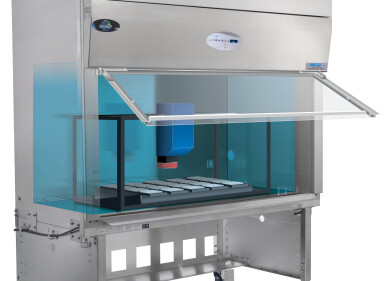Laboratory Products
Three Exciting Uses for 3-D Bio-Printing
May 20 2015
What if you could take living cells, load them into a printer, and produce 3D tissue that could develop into a human organ? A few years ago that would have sounded like science fiction, but scientists may be getting closer to making it a reality.
Human embryonic stem cells (hESCs)
Stem cells obtained from human embryos can develop into any cell type in an adult person. This means they can be used in regenerative medicine — repairing, replacing and regenerating damaged cells, tissues or organs.
Scientists at Heriot-Watt University in Edinburgh have created a cell printer capable of printing uniform-size droplets of embryonic stem cells gently enough to keep them alive and maintain their ability to develop into different cell types. The new printing method could be used to make 3D human tissues for testing new drugs or growing new organs.
Repairing a damaged heart
Researchers are working on developing a 'heart patch' made from 3D-printed cells that could actually repair damaged hearts. Ralf Gaebel of the University of Rostock, Germany, and his colleagues, made such a patch using a computerized laser-based printing technique. They implanted patches made of human cells in the hearts of rats that had suffered heart attacks; the rats' hearts that were patched showed improvement in function, the scientists reported in the journal Biomaterials.
With myocardial infarction and other cardiovascular diseases being the leading causes of debilitation and death, the potential implications of this development may be hugely significant. The World Health Organisation (WHO) reports that ischaemic heart disease, has remained among the top major killers worldwide during the past decade.
Studying cancer through printed cells
Printing cells could lead to better ways of studying diseases in the lab and then developing therapies. For example, one group of researchers used an automated system to print ovarian cancer cells onto a gel in a lab dish where the cells could be grown and studied. The printing approach could enable scientists to study the tumor cells in a more systematic environment and use them to test out drugs.
The rapid development of viable inkjet technology for highly specialised applications, such as printing human cells, continues to generate significant interest. If successful, the realisation of this technology for specialised biological applications, generally known as ‘biofabrication’, has the potential, for example, to replace using animals for testing new drugs. However, there are many challenges to overcome to enable the successful production of a valve-based cell printer for the formation of human embryonic stem cell spheroid aggregates. For more information see Miniature VHS Solenoid Valves Play Significant Role in the Viability of 3D Bio-Printing of Human Cells.
Digital Edition
International Labmate 49.6 - Sept 2024
September 2024
Chromatography Articles - HPLC gradient validation using non-invasive flowmeters Mass Spectrometry & Spectroscopy Articles - From R&D to QC, making NMR accessible for everyone: Putting NMR...
View all digital editions
Events
Oct 08 2024 Gothenburg, Sweden
Oct 09 2024 Birmingham, UK
Oct 09 2024 NEC, Birmingham, UK
Oct 15 2024 Milan, Italy
Oct 17 2024 Dhaka, Bangladesh







.jpg)










